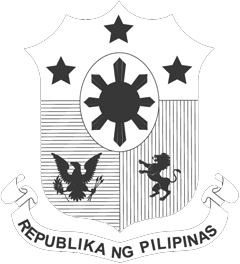
Philippine-American War
Initially, after declaring independence in 1898, the Philippine government took on a dictatorial form. This was replaced by a revolutionary government headed by Emilio Aguinaldo as president on June 23, 1898. The First Philippine Republic was formally established with the proclamation of the Malolos Constitution on January 23, 1899. When it became apparent that the United States had no intention of recognizing the newly established Republic, the Philippine–American War erupted with a declaration of war by the Philippines on the United States. The Philippine Revolutionary Forces, which lacked sufficient ammunition, lost many battles. By 1901, the Filipinos had completely lost the war.
The Philippine Revolutionary Army was founded on March 22, 1897 in Cavite. The armed force of General Emilio Aguinaldo's revolutionary government, with General Artemio Ricarte as its first Captain General, replaced the Katipunan military. Though the Philippine Army grew out of forces which fought in opposition to and which defeated forces led by General Ricarte, General Ricarte is considered to be the father of the Philippine Army.
In 1901, the United States established the Philippine Constabulary for purpose of assisting in combating the remnants of the revolutionaries. The AFP was formally organized during the American Commonwealth era through the National Defense Act of 1935. The Philippine Army was initially organized from among former holders of Reserve Commissions in the United States Army, from among former officers of the Philippine Scouts and Constabulary, and others—forces involved in the defeat of the revolutionary forces which Ricarte led. Ricarte was the only revolutionary general who refused to take the oath of allegiance to the U.S. and that he lived in exile in Hong Kong and later in Japan. Ricarte was one of the leaders of an organization termed "MAKAPILIS", called Makabayan: Katipunan ng mga Pilipino, and characterized as having been a "fanatical pro-Japanese organization" during the WW-II Japanese occupation.
Philippine Commonwealth, the Cold war and Present
During the Philippine Commonwealth era, President Manuel L. Quezon, the first president of the Commonwealth, renamed the Philippine Army to the Armed Forces of the Philippines and asked General Douglas MacArthur to be its first commanding officer after the Philippines gained independence from the U.S. MacArthur accepted the offer and became the only person of foreign citizenship to be in the ranks of the AFP. MacArthur held the rank of Field Marshal, a rank no other person has since held in the AFP. MacArthur expanded the Philippine armed forces, but they were not ready for combat at the start of the Pacific War in December 1941 and unable to defeat the Battle of the Philippines 1941–42 Japanese invasion of the Philippines.
During World War II, all soldiers of the Philippine military were incorporated in the U.S. Army Forces Far East (USAFFE),with MacArthur appointed as its commander. USAFFE made its last stand on Corregidor Island in the Philippines, after which Japanese forces were able to force all remaining Filipino and American troops to surrender. After Japan was defeated in World War II, the Philippines gained its independence (its second independence – the Philippines recognizes Aguinaldo's declaration of independence in 1898 as its original year of independence).
At the height of the Cold War, the Philippines was one of the most well-equipped militaries in Asia, because of a tight diplomatic-relationship with the United States in battling the threat of Communism. Since 2001, the Philippine armed force has been active in supporting the War on terror, initiated by the U.S. and its allies.

